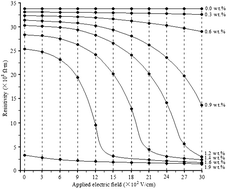Electric field-dependent conductivity achieved for carbon nanotube-introduced ZnO matrix
Abstract
In contrast to the carbon nanotube (CNT)-introduced insulating matrix, the electric conductivity of CNT-introduced ZnO matrix is not only dependent on the CNT content, but is also dependent on the applied electric field when the CNT content approaches the electrical percolation threshold. From the viewpoint of circuit interconnections in a microscope, there are two conductor–semiconductor contact structures equivalent to Schottky junctions being series connected between the adjacent CNTs, forming electrical field-dependent impedances between adjacent CNTs in the CNT-introduced ZnO matrix. Based on the electrical percolation theory, the CNT-introduced ZnO matrix may be seen to be a comprehensive circuit composed of a large amount of electrical field-dependent impedances connected in series and in parallel. On increasing the applied electric field, these impedances would be decreased, leading to an inevitable decrease in the resistivity of the CNT-introduced ZnO matrix. In essence, the electric field-dependent conductivity for a CNT-introduced ZnO matrix is a macroscopic quantum tunneling effect. From a practical perspective in electronic technologies, such a distinctive performance in electrical conductivity would have promising applications.


 Please wait while we load your content...
Please wait while we load your content...